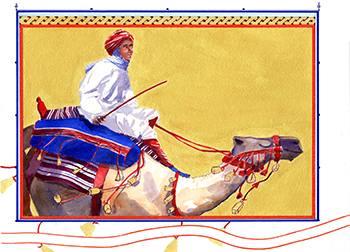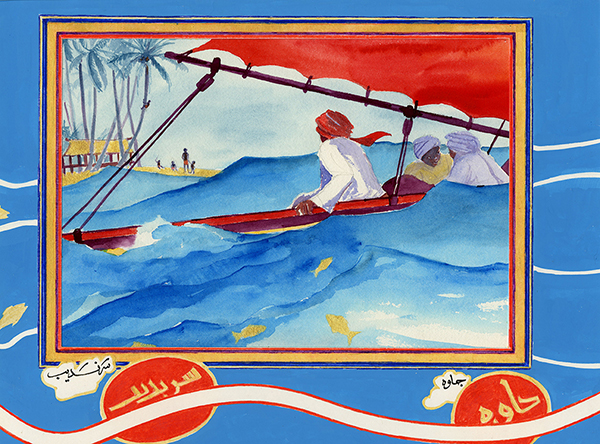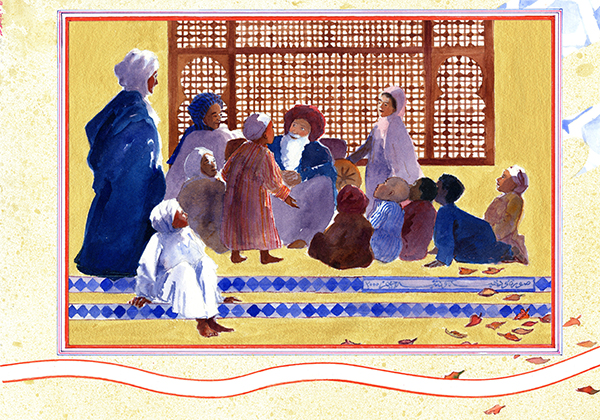Traveling—it leaves you speechless,
then turns you into a storyteller.

To purchase a copy of
Traveling Man, the Journey of Ibn Battuta, 1325—1354,
click here.
1966, my senior year, Wilson High School, Long Beach, California. The new issue of the National Geographic has just arrived in the library. I casually thumb through it, then stop. On one of its pages in an article on Saudi Arabia there is a map done by an Arab cartographer in the Middle Ages. It is absolutely stunning, filled with mystery and perfumed, or so I imagine, with travel and adventure. I check the copy out and take the magazine home. That night I make my own copy of the map, trying as best I can to write out the Arabic correctly.I wasn’t all that unfamiliar with the script. It so happened that that year I was asked to help out a student named Farshid Farshad who had just come from Iran. He spoke little English. I said: “If you teach me Persian, I’ll help you with your English.” We became great friends. And so it was that I learned how to write haltingly using the Arabic script, and to come to appreciate a medieval Arab map.

1984, Jeddah. I am living in Saudi Arabia and there buy an English translation of Ibn Battuta’s travel book, which he had done after 1354. I enjoy the book and, rummaging through bookstores, I revive my interest in Arab cartography.
1999, Honolulu. With three published children’s books under my belt, I search around my house to find something else that would interest me enough to turn into an illustrated book. My eye scans the bookshelves and rests on the book I had bought in Saudi Arabia. I take it down and, before I have reread a few pages, the first words of my book come to me: In the days when the earth was flat and Jerusalem was the center of the world, there was a boy named Ibn Battuta.

March 2000, Orange County, California, an elementary school. I am showing my manuscript with the illustrations sketched in as well as many of the pages that I ornamented with Arabic. Two girls come up to me after my talk. They ask, “Can you read that writing?” “Yes,” I answer, “Can you?” They nod. I ask them where they are from. “Afghanistan,” they say. I start speaking to them in Persian. One of the girls bursts into tears. The other kids in the class want to know what I’ve said to make her cry. “She’s laughing, not crying,” the other Afghan girl fibbed. I was stunned. I guess no one had ever validated her presence as an Afghan before.

August 2001, Honolulu, an elementary school. I am again showing my manuscript. It is finished and will soon be out on bookshelves. A girl raises her hand, “Can you read that writing?” she asks. “Yes, I can. Can you?” She says that she can and I ask her where she is from. “Yemen,” she says. She helps me write her name on the board. The next day I hear from the teacher that the girl wrote the names of all of her classmates out in Arabic. Everyone learned so much.
September 15, 2001. They are still showing the scenes of the towers in New York coming down. The airports are closed. My book makes its appearance that day. I wonder if anyone will ever read it now especially with its pages so filled with what many must perceive as the hooks and barbs of the Arabic script. Then something I didn’t expect happens. My book flies off of the shelves. A few days pass and USA Today calls me up for an interview. A few more weeks and I am on NPR. Books—they take you to undreamed of places.

May 2012, Honolulu. I receive a letter from King Mohammed VI of Morocco thanking me for writing about one of his country's most famous men.

